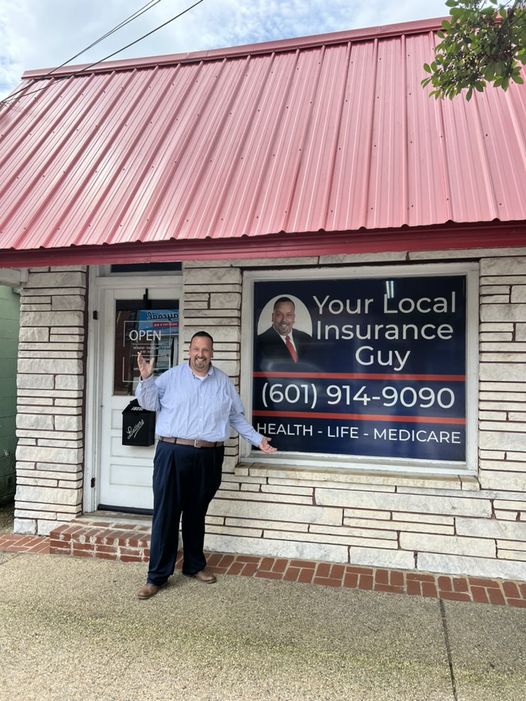WELCOME TO MEDICARE
Explaining Your Medicare Options
Our goal is to help you understand your options when you get Medicare. That is my goal every time that I work with a client. Making decisions about your Medicare coverage is important and can have major impact on how well you are protected. Medicare typically covers about 80% of medical bills and leaves 20% for you to deal with. In addition to this, Medicare does not usually cover dental expenses, vision benefits, and hearing benefits. This is why it is important that you work with someone that has your best interest in mind!
It is normal for people to be confused by Medicare. The easiest way to understand Medicare is to understand what the different parts of Medicare are. Medicare Parts A & B can be looked at as the centerpieces that everything else revolves around. They are the only two pieces that come from the government. All other parts you hear about come from private insurance companies.

What Is Medicare Part-A?
Hospital Insurance
The best way to explain Medicare Part-A is that it is what your FICA taxes that you paid throughout your working life provides. Part-A is most known for providing a person with Hospital coverage. The important thing to remember with the Part-A hospital coverage is that it covers the physical hospital when you spend the night as an inpatient. It also covers things like inpatient skilled nursing, home health care, and hospice.

What Is Medicare Part-B?
Medical Insurance
For the most part Medicare Part-B includes your outpatient services. Such as doctor visits, outpatient surgeries, lab work, outpatient x-rays, durable medical equipment (like wheelchairs and oxygen tanks), ambulance services, and other things. Medicare Part-B is basically the other side of the coin to Medicare Part-A. What Part-A does not cover on the medical side, typically Part-B does.
What Does Original Medicare Not Cover?
What is not covered by Medicare? The answer is Plenty! Medicare by itself does not cover prescription drugs, drugs that are filled by a pharmacy. It does not cover dental, vision, or hearing. Surprisingly, Medicare does not cover a traditional physical after you have been on Medicare for more than 12 months. Medicare provides you with a “Welcome to Medicare” physical to be conducted in the first year of being a Medicare recipient, after that they do not cover them again. Medicare covers what is known as a Wellness visit, which is best described as a less detailed physical.
What is Medicare Part C?
Medicare Advantage Plan
A Medicare Advantage Plan (like an HMO or PPO) is another Medicare health plan choice you may have as part of Medicare. Medicare Advantage Plans, are sometimes referred to as “Part C” or “MA Plans.” They are offered by private companies approved by Medicare.
If you join a Medicare Advantage Plan, the plan will provide all your Part A (Hospital Insurance) and Part B (Medical Insurance) coverage. Medicare Advantage Plans may offer extra coverage, such as vision, hearing, dental, and/or health and wellness programs. Most Medicare Advantage Plans include Medicare prescription drug coverage (Part D).
Medicare pays a fixed amount for your care every month to the companies offering Medicare Advantage Plans. These companies are required to follow rules set by Medicare. However, each Medicare Advantage Plan can charge different out-of-pocket costs and have different rules for how you get services (like whether you need a referral to see a specialist or if you must go to only doctors, facilities, or suppliers that belong to the plan for non‑emergency or non-urgent care). These rules can change each year.

What Is Medicare Part-D?
Drug Coverage
The best way to explain Medicare Part-D is the drug coverage portion of Medicare. The easiest way to remember is that D stands for drugs. That part is easy, however, knowing everything what you need to know to make a good selection with your Medicare Part-D plan can be a little bit more completed than just knowing what it does. There are two ways to get Part-D coverage:
- You can purchase what is known as a Stand Along Part-D Plan or PDP (Prescription Drug Plan). This typically is purchased to pair with a Medicare Supplement.
- You can purchase a Medicare Advantage plan that includes Part-D coverage with the plan.
No matter which way that you get your Part-D plan they both are structured in the same format and work basically in the same way.
For a further explanation continue reading.
The Tier System & Formulary
Part-D plans determine their coverage by having unique formularies. The best way to explain formulary is that they are a large list made up of hundreds or thousands of medications. This formulary determines what medications the plan covers, and how well it will cover them.
In the Medicare world, there is a tier system. Tiers are categories that different medications are placed into to determine how the plan will cover specific drugs. Typically, plans will have tiers 1-5, with 1 being the lowest and 5 being the highest. The higher the tier, the higher the copay. It is common for tiers 1 and 2 to be generic medications, and for tiers 3 and 4 to be brand name medications, with tier 5 being specialty medications.
One important element that can make a difference between one Part-D plan compared to another, is that different Part-D plans can decide to place different prescriptions into different tiers. For example, company A may decide to place a medication in their tier 2. Company B may decide to put the exact same prescription into tier 3. These placements can cause the cost to dramatically increase in comparison to company A.
“We do not offer every plan available in your area. Any information we provide is limited to those plans we do offer in your area. Please contact Medicare.gov or 1-800-MEDICARE to get information on all your options.”

